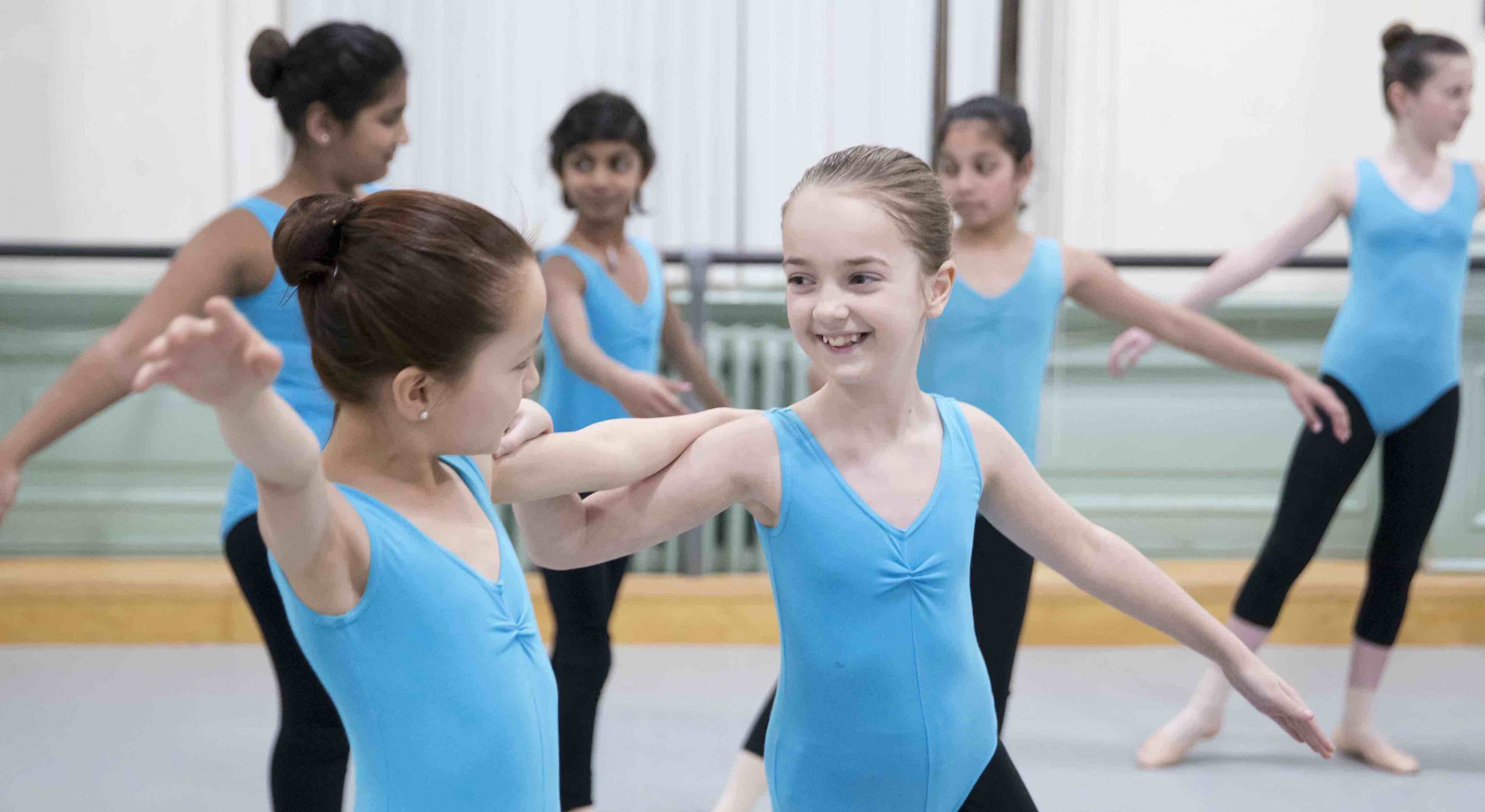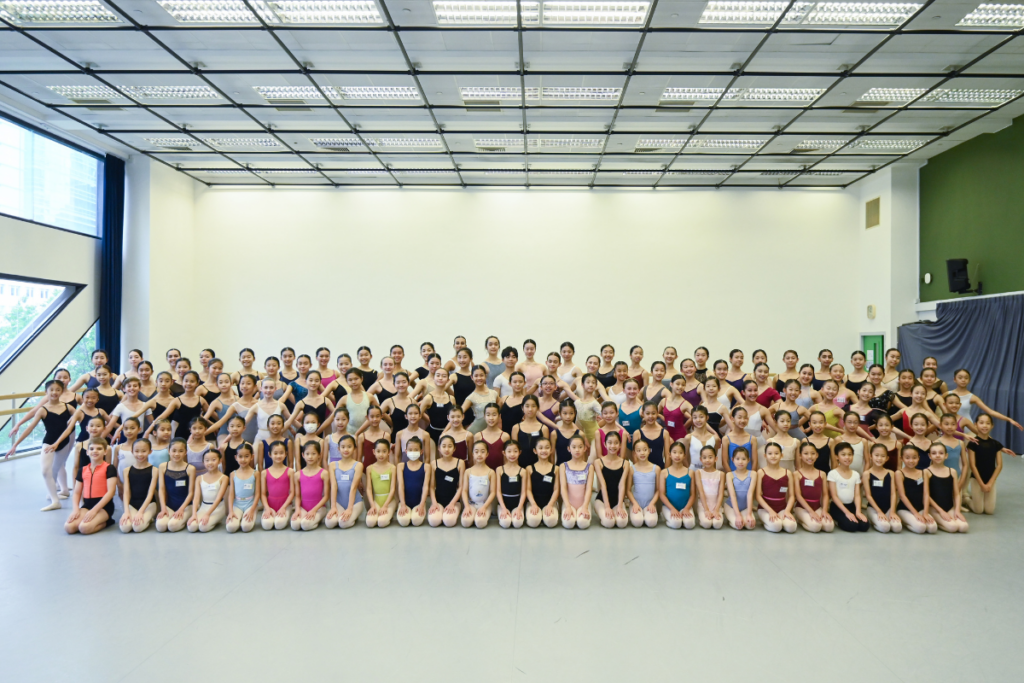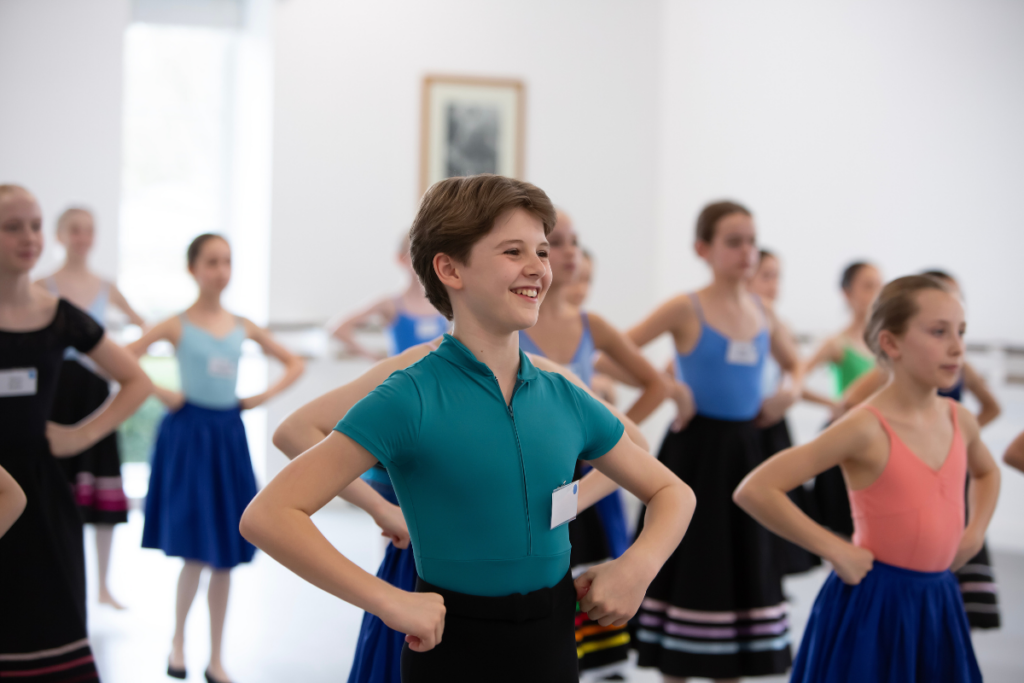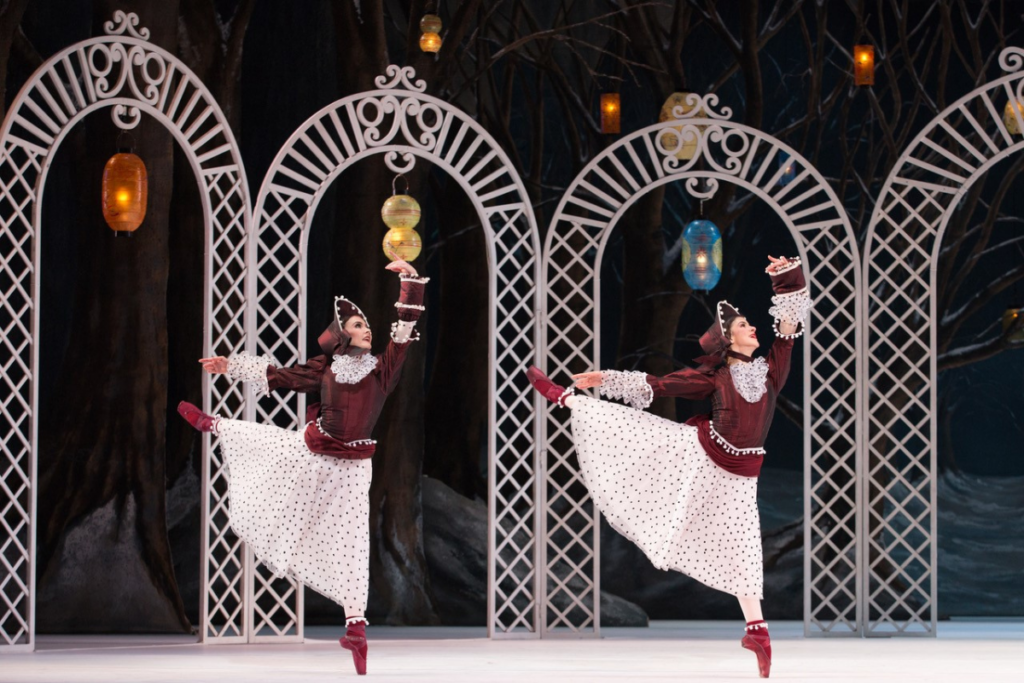Empowering girls through ballet: considering the emotional benefits of ballet classes for girls
A piece by Victoria Collinson, Associate Programme and Primary Steps Manager at The Royal Ballet School
Blackpool is the toughest place in the UK to grow up if you are a girl according to a recent report by Plan International UK. Blackpool girls’ experiences of school life, their mental health and body image ranked amongst the lowest in the UK.
This report caught my attention, as Blackpool is home to one of The Royal Ballet School’s Primary Steps centres. We therefore affect the lives of some of Blackpool’s girls. Last year 175 girls from Blackpool participated in our workshops and 38 of those girls are currently enrolled in our Primary Steps after-school programme. This led me to reflect on what girls can gain from participating in creative ballet classes such as our Primary Steps after-school classes.
Few would deny that ballet classes with skilled teachers develop movement skills and can increase fitness levels. The benefits of engaging in creative ballet classes can, however, transcend the dance studio. Ideas about how the ‘body can shape the mind’, for example yoga helping to alleviate the symptoms of PTSD are relatively recent in the West, where for a long time the mind and body have been seen as separate entities. I believe that ballet has the potential to develop attributes such as confidence, enhance social skills and help children to feel physically, mentally and emotionally empowered.
The Plan International UK report highlighted a notable increase in poor mental health. This is fuelled no doubt by the relentless social pressure for girls to look a certain way. Emotional disorders such as anxiety and depression have increased by 48% since 2004. This rise is even higher amongst girls and young women. If the benefits of ballet can go beyond simply dancing, ballet teachers could be instrumental in helping girls to develop their self-esteem and body confidence.
There are many practitioners who are already extremely conscious of the role that they can play. It cannot be ignored that in the past far too many ballet teachers increased, or were even responsible for, students’ negative body image. However, understanding is growing in the dance sector. For students to engage in an effective learning process, teachers must embrace a holistic approach to teaching. This includes awareness of students’ emotional needs.
You may wonder why this piece focuses on girls’ physical empowerment. Ballet has the reputation of being a female-friendly space. This is often to the detriment of boys in recreational dance settings. More can be done in ballet classes to promote feelings of empowerment. Unfortunately, at times ballet teachers may unwittingly enforce negative gender stereotypes.
Research is beginning to highlight that from a young age children think that girls carry themselves with less confidence than boys. Amy Cuddy, an American social psychologist, studied the age at which children start to associate posture with gender (Presence: Bringing Your Boldest Self to Your Biggest Challenges by Amy Cuddy, 2016). In the study, an artist’s mannequin modelled two poses; one which was expansive, strong and open and another which was contractive and closed. Children aged four and six then viewed these poses. The study revealed that when the mannequin was in an expansive pose the children identified it as a boy, and in a contracted pose as a girl. 73% of the four-year olds showed a male power bias that increased to 85% in the group of six-year-olds. This suggests that from a very young age children link certain postures to gender. The study identifies that the social norm is for females to embody unempowered positions.
We hold identification workshops at all five of our Primary Steps centres to identify which children will take part in our Primary Steps after-school classes. Last year, I noticed there were marked differences in the ways the boys moved compared to the girls. The boys in general approached movement tasks in a more dynamic way. The girls’ approaches to movement could often be described as more cautious and restricted. In general, the girls showed less physicality in comparison to the boys. Is this nature or is this nurture? Whichever side of the argument you wish to take, this can’t be a positive thing for girls. I strongly believe that we can encourage girls to embody a bolder, more versatile physicality.
Dance teachers need to encourage young girls, and of course young boys, to explore a full range of movements and movement qualities. Dance scholar Ann Daly describes classical ballet as a ‘discourse of difference’ responsible for ‘inscribing gender difference as an aesthetic virtue’ (Classical Ballet: A Discourse of Difference in Meaning in Motion by Ann Daly, 1999). There is no denying there is a gendered approach to ballet: women do pointework, men don’t; men do tour en l’air, women don’t. However, when we teach primary school children in a recreational ballet context, there is little need to make differentiations. Teachers should focus on generic movement skills, helping children to develop balance, agility and strength for example.
We shouldn’t be suggesting, either consciously or subconsciously, that there are some movement qualities that are for girls and some for boys. Girls need permission to be bold and courageous in their movement choices.
It is easy to overlook the small ways we send gender differentiating cues to our students – even our choices of music can be loaded. Jonathan Still, a music and dance scholar, highlighted the fact that ballet teachers routinely ask for music to be slower for boys when it comes to allegro. (‘Jumping like a girl’: musically gendered embodiment in ballet class by Jonathan Still, 2018). Boys therefore have the opportunity to practice jumping higher, whilst girls are denied this opportunity because of their teachers’ choice of music. The use of imagery also needs to be fully considered – references to superheroes are often used to stimulate boys in dance classes. Girls could equally benefit and enjoy this too. It is still fine to ask girls to think of butterflies, unicorns and princesses to generate certain qualities in their movement, it’s just a matter of balance.
The Primary Steps approach to ballet helps to empower young girls in a number of ways. Firstly, there are no criteria in the selection process that concern body type or the aesthetics of a child’s physique. This results in classes where there is no ‘standard’ body type. This helps to make everyone feel that they have a right to belong in class. Our criteria focus on how physically responsive children are to what is being taught, how children respond to musical and creative stimuli and which children show enthusiasm for and enjoyment of dancing.
Primary Steps teachers also strive to make children ‘active’ members of the class, not just physically but mentally. They set movement tasks where children input their own ideas when completing a task. This is often done with a partner or as part of a small group. Setting these tasks gives children ownership of their work, which in itself is empowering.
Another important part of Primary Steps is for children to appreciate and give feedback on their peers’ work. Teachers carefully establish the parameters of this feedback. Children get told two things they did well and a suggestion for something to work on. For girls in particular, praise from their peers for qualities or ideas expressed through their bodies can help boost their body confidence.
With a mindful, open and caring approach, ballet teachers are in a position to help girls view themselves in a positive light. This would not only benefit the girls themselves but could also demonstrates that ballet can be adaptable and relevant to 21st Century education.





